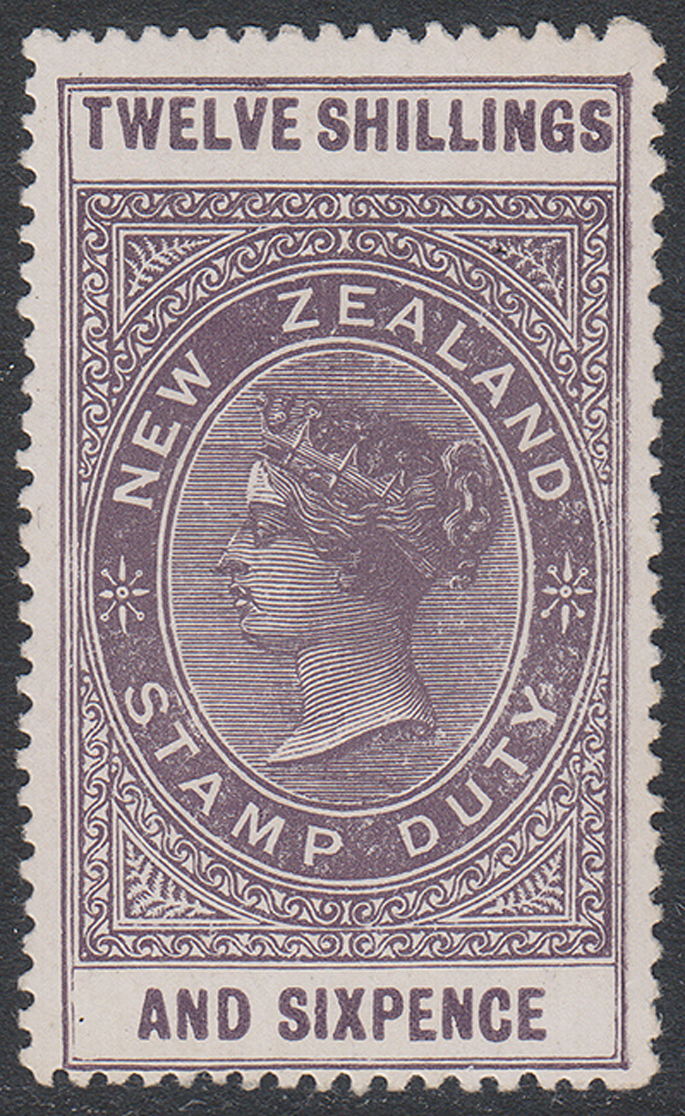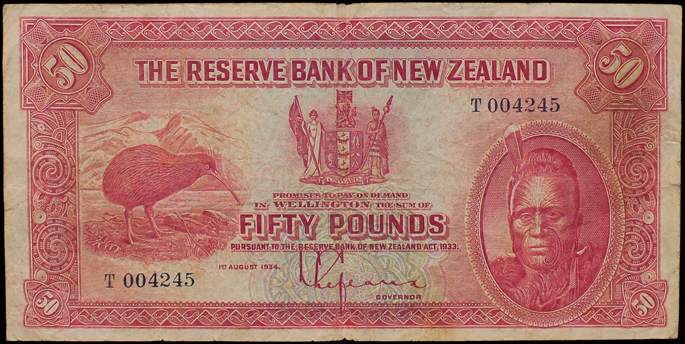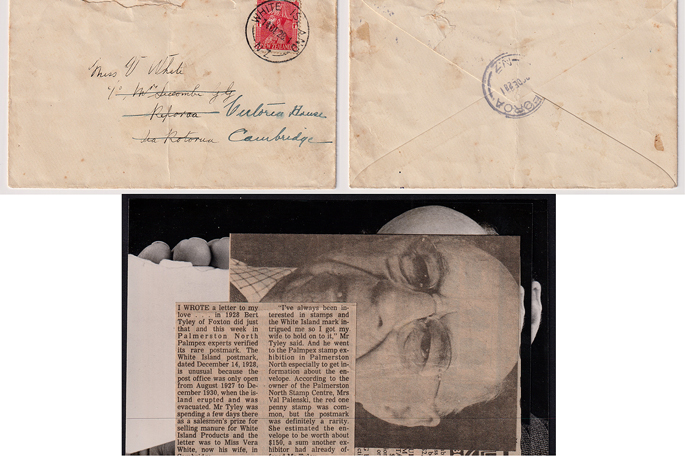An envelope sent from Whakaari/White Island to Cambridge on December 14, 1928, is up for auction estimated at $650.
The envelope is special because of its December 14, 1928, postmark from White Island.
The post office was only open on the dangerous island from 1927 to 1930, so letters from it are rare.
The Post Office supported sulphur mining which became uneconomic during the 1930s depression, forcing the post office to close.
The envelope is part of an auction that will see some of New Zealand’s biggest ever coin auctions in Wellington next week.
“These auctions with $1.7m of coins and stamps bring the last year’s offering to a record $3m and have great historic and collector interest,” says David Galt, recently appointed managing director Mowbray Collectables.
“The combination of rare stamps on offer is almost never seen.”
 12 shillings and sixpence 1925 stamp duty stamp estimated at $75,000.
12 shillings and sixpence 1925 stamp duty stamp estimated at $75,000.
Top New Zealand stamp is a 1925 Twelve Shillings and Sixpence stamp used for paying stamp duty tax showing Queen Victoria, with a $75,000 estimate, one of 10 known.
 Threepence Vanguard stamp of 1949 estimated at $65,000.
Threepence Vanguard stamp of 1949 estimated at $65,000.
Even scarcer is a Threepence 1949 stamp for the cancelled NZ visit of King Charles’ grandfather, George VI, showing the ship the King was to travel on, one of just seven to survive, estimated at $65,000.
Top coin estimate of $18,000 is for a superb set of six NZ coins from 1935 with the rare, large Waitangi Crown coin showing Lieutenant Governor William Hobson and Chief Tamati Waka Nene at the signing of the Treaty of Waitangi.
The top banknote is a 50 Pounds Reserve Bank 1934 note also showing Tamati Waka Nene estimated at $20,000, the first available in the regular auctions since 2018.
 Reserve Bank 50 Pounds Banknote of 1934.
Reserve Bank 50 Pounds Banknote of 1934.
It would have had a face value of $7500 in today’s money.
Quirky coins include Pennies which were stuck in the press and show two heads and two “mule” coins combining head designs from completely different countries with New Zealand designs, the kowhai on a 2 cent with a Bahamas die and the pied shag with a Solomon Islands die on a $5 coin from 2000.
There are eight medals from the 1860’s New Zealand Wars, which typically sell for $1000 upwards, and eight memorial crosses issued to the NZ families of soldiers killed in World War II onwards after war-time Prime Minister Peter Fraser sought a way to express condolences to the families.
As ANZAC Day looms in April, these provide a potent reminder of the sacrifices and deaths of those who served overseas.



0 comments
Leave a Comment
You must be logged in to make a comment.